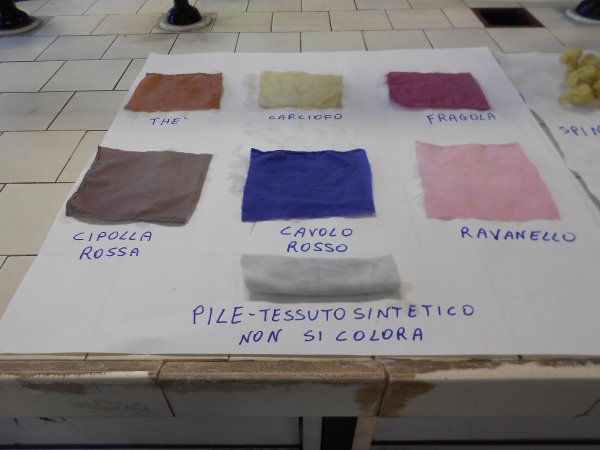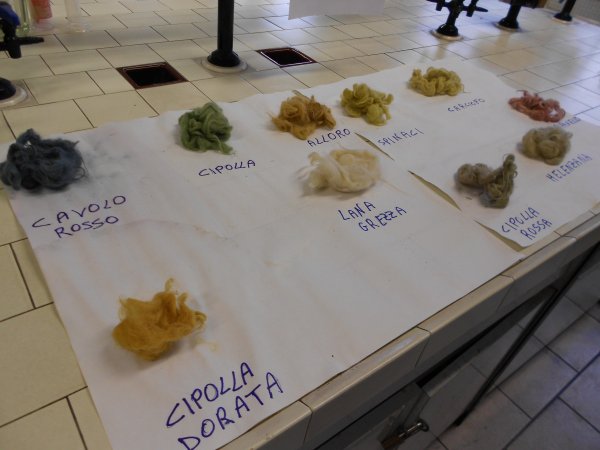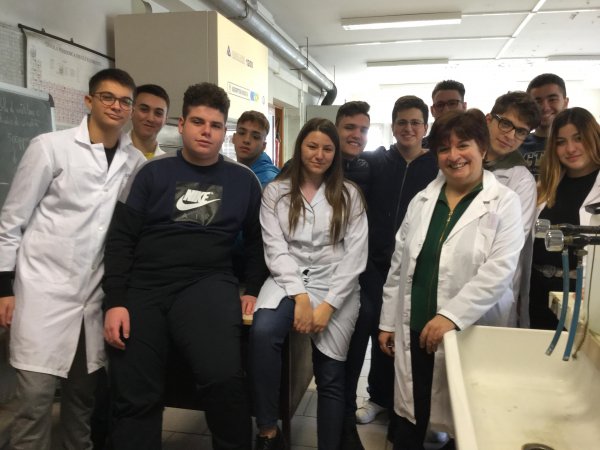Exhibitors 2019
- 3D PRINTING
- ART
- EDUCATION
- HOME AUTOMATION
- INTERNET OF THINGS
- KIDS & EDUCATION
- RECYCLING & UPCYCLING
- ROBOTICS
- SCIENCE
- YOUNG MAKERS (< 18)
- BIOLOGY
- GAMES
- ARTIFICIAL INTELLIGENCE
- OPEN SOURCE
- NEW MANUFACTURING
- FABRICATION
- WELLNESS & HEALTHCARE
- ENERGY & SUSTAINABILITY
- FOOD & AGRICULTURE
- 3D SCANNING
- CULTURAL HERITAGE
- AEROSPACE
- HACKS
- MUSIC & SOUND
- ARTISANS & NEW CRAFT
- FASHION & WEARABLES
- DRONES
- STEAM PUNK
- ARDUINO
- CROWDFUNDING
Vestiamoci con i colori della natura - Dal passato una sfida all'innovazione
Natural dyes
From the past a challenge to innovation
The project, "Natural dyes" – From the past a challenge to innovation", was addressed to the students of a third class of the ITI "Cannizzaro" of Catania and was placed in the context of the initiatives related to the activities of Education Environmental and youth awareness in the areas of eco-innovative production and sustainable consumption.
Students produced natural dyes (flavonoids, anthocyanins, tannins) that can be used as tissue dyes as a substitute for synthetic dyes, especially as a substitute for environmentally harmful azo dyes but especially for humans.
Since the discovery of the first synthetic dye, the chemistry of dyes has been increasingly applied. It has enabled the textile industry to provide fibres, and therefore fabrics, equipped with a wide range of colour tones, excellent dye quality, low price and virtually unlimited availability. In the face of these significant benefits, over time, issues related to the use of synthetic dyes have emerged.
Industrial entrepreneurship is not always respectful of health, the environment and workers' rights; especially in the poorest countries causes pollution and does business by paying very low wages and often exploiting child labour.
For years, Italian dermatologists have been highlighting the number of tissue-induced contact dermatitis. The problems do not arise from the fibers but from what is used to color.
The origin of pathologies is often linked to the presence on textiles of substances that have long been banned in Italy and Europe. Import products in some countries are sometimes treated with non-standard chemicals. Azo dyes, often found in Chinese fabrics, conveyed by sweat, are absorbed by the skin. These dyes, following certain enzymes, are later transformed into free aromatic amines, harmful to human health.
A return to the application of natural substances could be a viable alternative to synthetic dyes.
The project involve the use of a Soxhlet extractor to extract dyes from natural products such as red cabbage, red onion, radishes, artichokes, etc.... , the work was completed with a dye test on raw wool and natural fabrics and also with some evidence of color stability.
A book with texts and images documents all the activity carried out in the laboratory and also a sample of eco-friendly colors, produced by the students, documents the different shades of colors obtained from pigments extracted from plant matrices.
From the past a challenge to innovation
The project, "Natural dyes" – From the past a challenge to innovation", was addressed to the students of a third class of the ITI "Cannizzaro" of Catania and was placed in the context of the initiatives related to the activities of Education Environmental and youth awareness in the areas of eco-innovative production and sustainable consumption.
Students produced natural dyes (flavonoids, anthocyanins, tannins) that can be used as tissue dyes as a substitute for synthetic dyes, especially as a substitute for environmentally harmful azo dyes but especially for humans.
Since the discovery of the first synthetic dye, the chemistry of dyes has been increasingly applied. It has enabled the textile industry to provide fibres, and therefore fabrics, equipped with a wide range of colour tones, excellent dye quality, low price and virtually unlimited availability. In the face of these significant benefits, over time, issues related to the use of synthetic dyes have emerged.
Industrial entrepreneurship is not always respectful of health, the environment and workers' rights; especially in the poorest countries causes pollution and does business by paying very low wages and often exploiting child labour.
For years, Italian dermatologists have been highlighting the number of tissue-induced contact dermatitis. The problems do not arise from the fibers but from what is used to color.
The origin of pathologies is often linked to the presence on textiles of substances that have long been banned in Italy and Europe. Import products in some countries are sometimes treated with non-standard chemicals. Azo dyes, often found in Chinese fabrics, conveyed by sweat, are absorbed by the skin. These dyes, following certain enzymes, are later transformed into free aromatic amines, harmful to human health.
A return to the application of natural substances could be a viable alternative to synthetic dyes.
The project involve the use of a Soxhlet extractor to extract dyes from natural products such as red cabbage, red onion, radishes, artichokes, etc.... , the work was completed with a dye test on raw wool and natural fabrics and also with some evidence of color stability.
A book with texts and images documents all the activity carried out in the laboratory and also a sample of eco-friendly colors, produced by the students, documents the different shades of colors obtained from pigments extracted from plant matrices.
Italy
Classe IIIA Chimica - ITI Cannizzaro Catania
The students were always enthusiastic about the laboratory activities so 30 extracurricular hours were carried out exclusively for laboratory activities to address issues related to synthetic and natural dyes that do not are addressed in curricular programmes.
Some students worked with a proactive attitude, supported by a valid method of study, achieving excellent results.
Some students worked with a proactive attitude, supported by a valid method of study, achieving excellent results.
D11 (pav. 5)





















































































